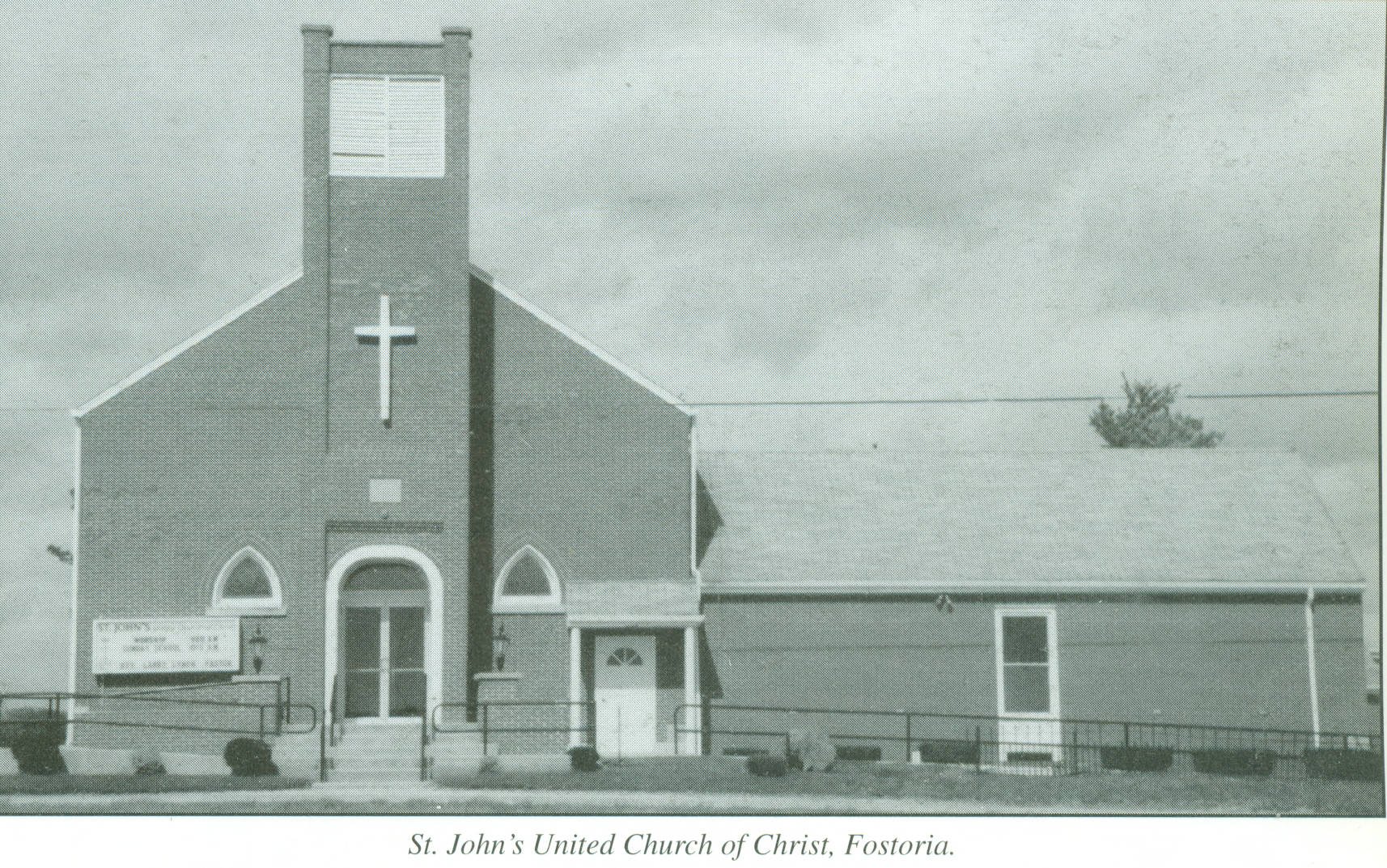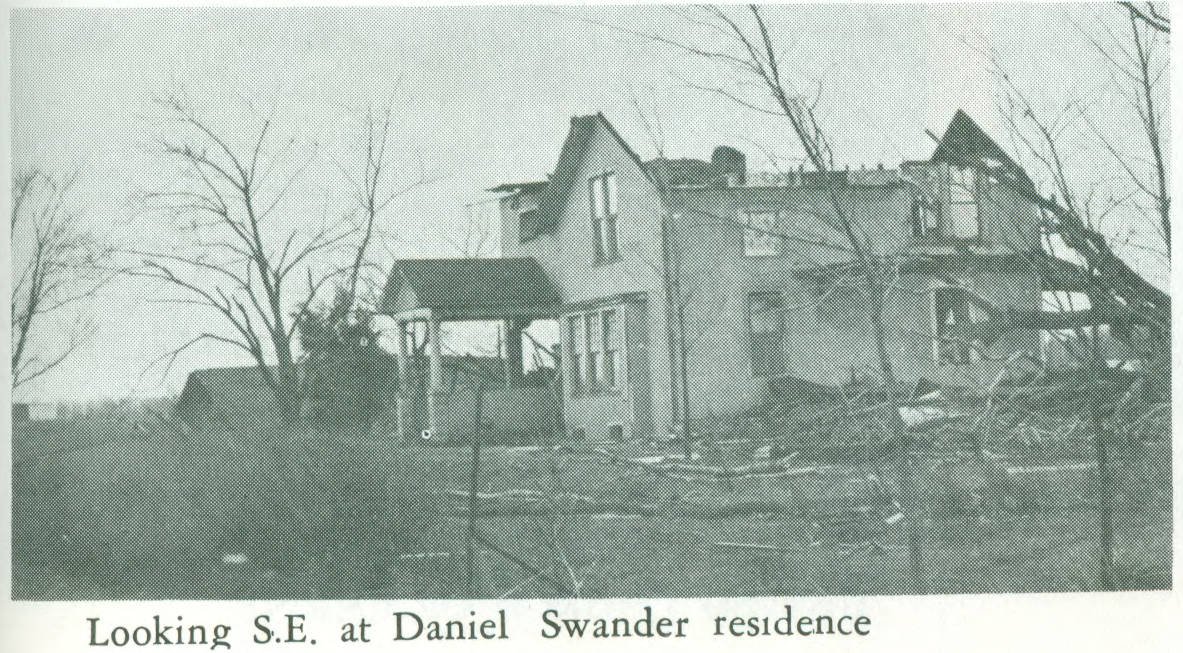By Emily Rinaman, Technical Services Manager
A widely known fact is that in the summer of 1988, a terrible drought affected dozens of counties throughout Ohio. A little-known fact? That same year, not one tornado touched down in the entire state of Ohio.
Seneca County has seen its share of tornadoes, some larger and more destructive than others. On average, Ohio sees about 20 tornadoes per year. Most tornadoes in Ohio (over half) strike in the late spring and early summer (May through July). In more recent history, the most deadly of our time was an anomaly--the tornado on November 10, 2002, which traveled through the county, hitting both the Tiffin and Fostoria airports, Greenlawn Cemetery, Heidelberg University, Republic, and many homes in between. It reached the F3 level and killed two people. In general, on this particular day, Ohio saw the most tornadoes in one day than it had since 1950.
This was not the first (nor the last). As early as 1825 there is documentation of tornadoes in Ohio. On May 18, 1825, known as the “Burlington Storm,” began in the afternoon in Delaware County and headed north, uprooting “gigantic forests” over several miles, along with cows, oxen, and horses. Spectators (there’s always a storm chaser somewhere) testify that, even from almost a mile away, they could feel the ground vibrate beneath their feet. A four-foot plow chain was found lodged in the top of a maple tree. Debris was carried up to 30 miles away from its original location.
The Methodist Episcopal Church in 1890 before it was decommissioned and later destroyed in a tornado in 1953.
While it’s not clear what year it was destroyed, the oldest church in Bloom Township, Primitive Baptist, was hit by a tornado, taking all of the historical records up to that date with it. It happened sometime between the time the church was founded in 1830 and when the property was transferred to Benjamin Huddle in 1856.
Sometimes tornadoes create different sorts of paths. A tornado sent a young boy to the Junior Home in Tiffin from New Albany, Indiana, but not by carrying him as debris. The boy’s father was killed by a tornado in 1917. This random act of natural disaster set the boy’s life on a completely different course. The Junior Home had such an impact on him that after attending Heidelberg College, the young man returned to the home to become a teacher to the next generation of orphans.
On the corner of SR 224 and CR 7 once stood a small frame structure used by a reverend of the Methodist Conference for his pastor circuiting in the Bascom and Bettsville area (see photo). Eventually, this building was decommissioned by a farmer and was hit by a tornado on June 8, 1953. That same year, the Omar Chapel and cemetery were damaged by a tornado.
St. John’s United Church of Christ in Fostoria was rebuilt after a tornado struck it on May 27, 1937, damaging the pipe organ beyond repair. It was dedicated in November of that year.
Attica was a site affected by the “Palm Sunday tornadoes” on April 11, 1965, a collection of 11 tornadoes that killed 60 people. Around this time, tornadoes started to become researched and recorded in more scientific detail. Of the tornadoes tracked in Ohio since the 1960s, 9 out of 10 of them never grow past an F3 size.
In order for a tornado to be considered an F5, winds must reach at least 260 miles per hour, which is enough force to lift buildings off foundations and pick up debris as heavy as cars. An F3 produces up to 200 mile-per-hour winds and can still uproot trees and rip entire walls off buildings. It’s still best to use caution even at the F1 level. These storms have 75-mile-per-hour wind gusts and can damage roofs, and windows, flip small structures onto their sides and snap tree trunks.
You can explore an interactive map called the “Tornado Archive” on Cincinnati.com, showing the path tornadoes took from their first and last confirmed touchdown sites. The map also color codes the tornadoes specifying their grade on the Enhanced Fujita Scale (2007). These grades are based on the speed of a gust for a three-second interval. The sidebar provides a breakdown of some of the larger tornadoes in Seneca County that were at least an F1 on this map (there are several others that were rated F0).
While the strongest tornadoes, F5 on this scale, typically happen more often in the true “Tornado Belt,” Ohio has still experienced four F5 tornadoes. May 31, 1985, saw ten tornadoes around the state with an F5 killing ten people in Portage and Trumbull Counties. On April 3, 1974, sixteen tornadoes struck, and an F5 in Green, Clark, and Hamilton counties killed 39 people and injured 1,340.
Dubbed the “Palm Sunday Tornadoes,” these storms in 1965 did extensive damage to property in many parts of Seneca County. This photo was taken from the Tiffin-Seneca Sesquicentennial 1817-1967 booklet on the Seneca County Digital Library.
By the 1960s and 1970s when people were more diligent about protecting themselves properly from tornadoes, Tiffin had created many official storm shelters. These included the LaSalles Department Store, Seneca County Courthouse, the gymnasium at East Junior High School, J.C. Penney Co., Masonic Temple, old post office (now the site of the American Civil War Museum of Ohio), Calvert High School, Heidelberg College’s music building and science building, National Machinery’s office building and storage building, Heidelberg University’s Krieg Hall, King Hall West, King Hall East, Ritz Theatre, Knights of Columbus, the fire department, Ohio Power Company’s office, Advertiser-Tribune, YMCA (front wing), Pease TV, Presbyterian Church, St. Francis Home, Ohio Power Service, and Seneca County Home.
If you are ever at the Tiffin-Seneca Public Library when a tornado warning happens, the library does have a safety policy in place and the staff will direct you to the appropriate locations to wait out the storm.
Works cited:
Bascom Area Sesquicentennial 1837-1987. https://ohiomemory.org/digital/collection/p15005coll27/id/41947
History of Seneca County from the Close of the Revolutionary War to July 1880. https://ohiomemory.org/digital/collection/p15005coll27/id/17928
Junior Home The Junior Homekid April 2002. https://ohiomemory.org/digital/collection/p15005coll27/id/49644
National Oceanic and Atmospheric Association. “A History of Twisters: Tornadoes in Ohio since 1950.” Oct. 31, 2022. https://data.cincinnati.com/tornado-archive/
“Ohio’s Tornado History and What to Do if you Are Caught in a Twister.” Akron Beacon Journal. March 24, 2021. https://www.beaconjournal.com/story/news/2021/03/24/ohio-tornado-history-drill-and-what-do-if-youre-caught-storm-severe-weather-twister-high-winds/6979208002/
Omar: A Community of Memories. https://ohiomemory.org/digital/collection/p15005coll27/id/41429
Seneca County Digital Library. https://ohiomemory.org/digital/collection/p15005coll27/search
Sketches of Bloomville and Bloom Township. https://ohiomemory.org/digital/collection/p15005coll27/id/41848
A Survey of Local Government Tiffin, Ohio – 1972. https://ohiomemory.org/digital/collection/p15005coll27/id/63667
Tornado Alley States 2023. https://worldpopulationreview.com/state-rankings/tornado-alley-states




